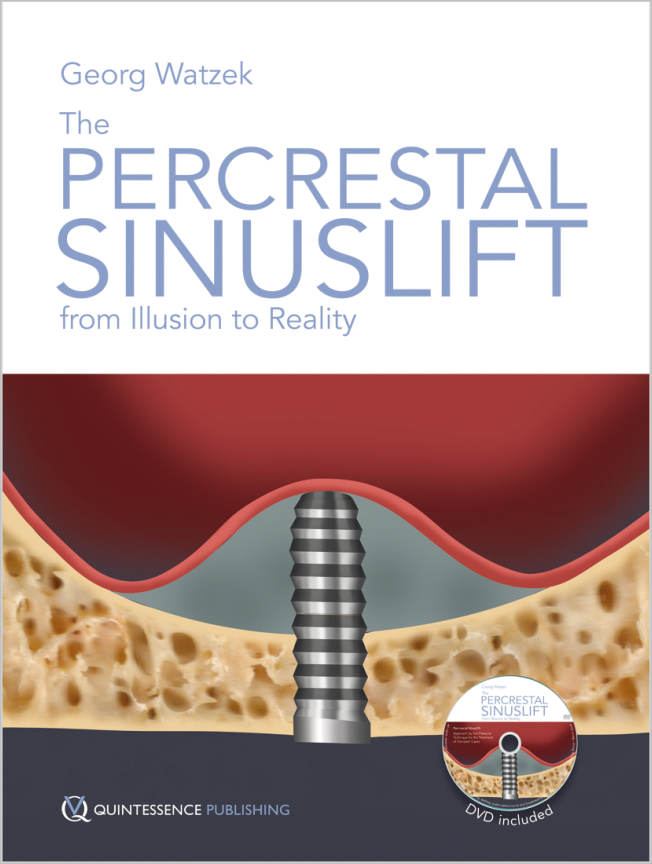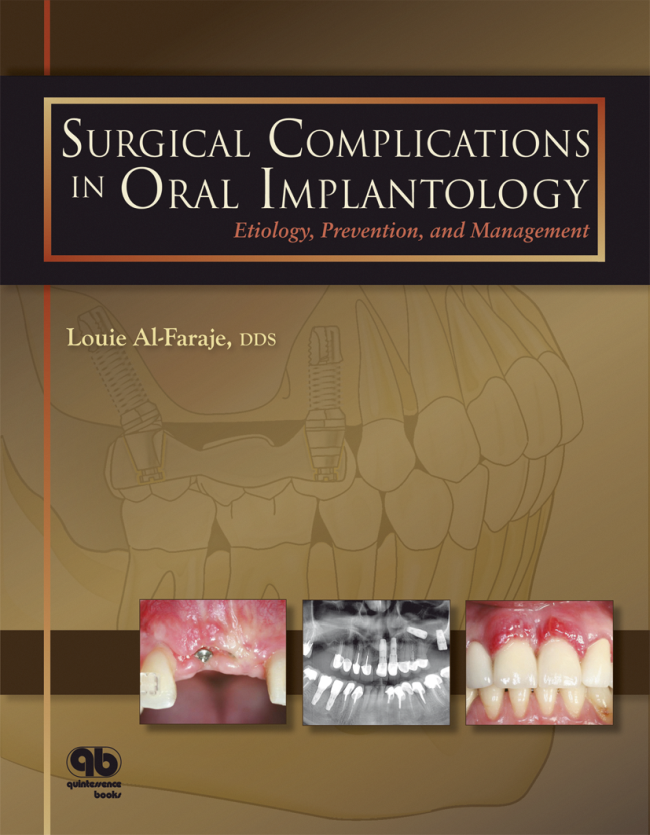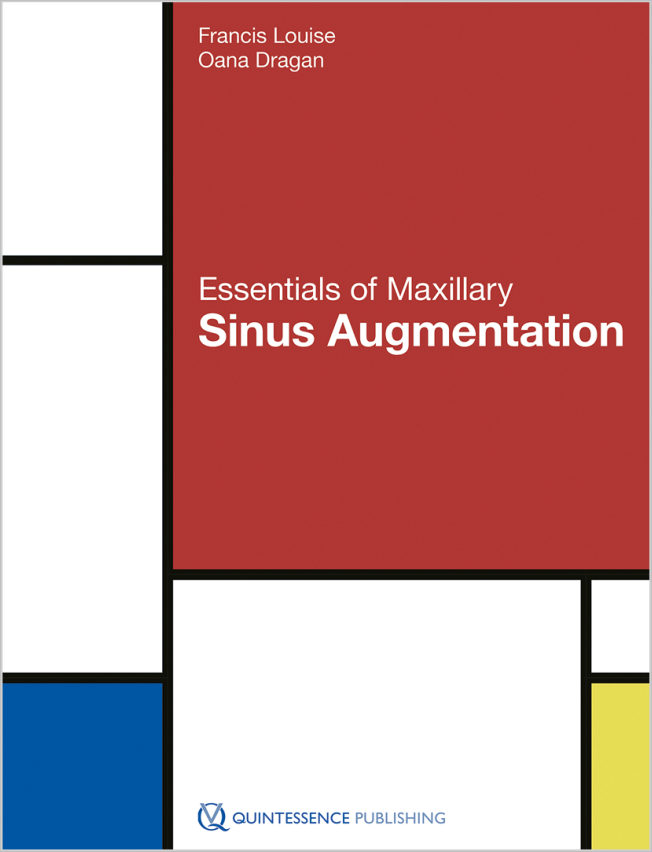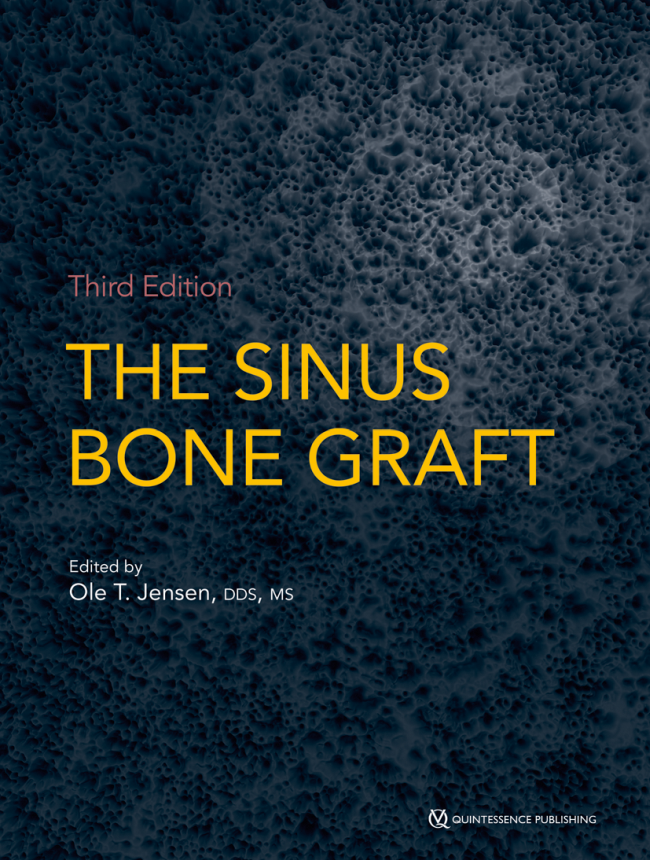Georg Watzek
The Percrestal Sinuslift
From Illusion to Reality
1st Edition 2012
Buch, DVD-Rom
Hardcover, 21 x 28 cm, 248 Seiten, 535 Abbildungen
Sprache: Englisch
Kategorien: Implantologie, Oralchirurgie
Artikelnr.: BG100
ISBN 978-1-85097-222-8
QP Deutschland
Produkt vergriffen.
Transcrestal sinus floor elevation has become an increasingly popular procedure, particularly with the introduction of innovations targeted at minimally invasive techniques. However, recent reports cast doubt on the efficiency and predictable success of standard techniques. This book is intended to alert the reader to the shortcomings of some accepted techniques of transcrestal sinus floor elevation and provide a blueprint to help develop transcrestal sinus floor elevation into a surgical protocol that meets the general medical standards of a minimally invasive procedure. The author builds a careful case through a critical review of pertinent anatomy, biologic considerations, biomechanics, and generally accepted procedures before elucidating the key elements needed for successful sinus elevation, including radiologic evaluation, preoperative work-ups, transcrestal osteotomy techniques, methods of sinus augmentation, use of technological innovation, and management of complications. The accompanying DVD-ROM includes surgery footage documenting the percrestal sinuslift using the gel pressure technique. An indispensible book for implant surgeons.
Contents
Chapter 01. Maxillary sinus anatomy and physiology
Chapter 02. Biologic aspects of sinus augmentation
Chapter 03. Generally accepted procedures
Chapter 04. Status quo analysis
Chapter 05. Biomechanics of transcrestal sinus membrane elevation
Chapter 06. Radiologic assessment
Chapter 07. Preoperative measures for assuring success
Chapter 08. Transcrestal osteotomy: technologic considerations and options for bone perforation
Chapter 09. Insights into sinus augmentation: preclinical and clinical research
Chapter 10. Clinical experiences using innovative equipment
Chapter 11. Compromised results and complications
Chapter 12. Summary and outlook
Contents
Chapter 01. Maxillary sinus anatomy and physiology
Chapter 02. Biologic aspects of sinus augmentation
Chapter 03. Generally accepted procedures
Chapter 04. Status quo analysis
Chapter 05. Biomechanics of transcrestal sinus membrane elevation
Chapter 06. Radiologic assessment
Chapter 07. Preoperative measures for assuring success
Chapter 08. Transcrestal osteotomy: technologic considerations and options for bone perforation
Chapter 09. Insights into sinus augmentation: preclinical and clinical research
Chapter 10. Clinical experiences using innovative equipment
Chapter 11. Compromised results and complications
Chapter 12. Summary and outlook
"This well-written text provides a good overview of the existing techniques for transcrestal sinus floor elevation along with their "shortcomings." In addition, the primary author (Dr Georg Watzek) builds an interesting case or "blueprint" based on several studies that he feels may well serve as a template for more accurate and predictable outcomes for this procedure."
Michael A. Pikos, DDS; Implant Dentistry (August 2012)
Michael A. Pikos, DDS; Implant Dentistry (August 2012)










